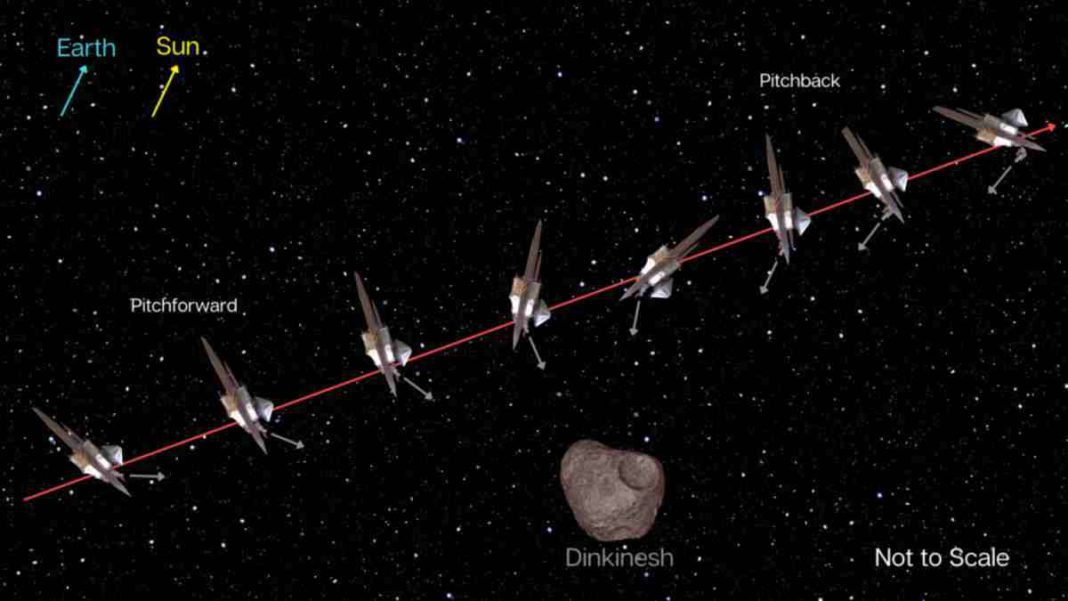UNITED STATES: NASA’s ambitious Lucy mission reached a significant milestone as its Lucy spacecraft successfully completed its first flyby of the asteroid ‘Dinky’ on November 1. This achievement marks a pivotal moment in the ongoing mission, which aims to unlock the secrets of our solar system’s history.
Lucy, launched in October 2021 with a budget of $1 billion, is aptly named after the 3.2 million-year-old skeletal remains of a human ancestor found in Ethiopia in the 1970s.
This mission is unique among NASA’s asteroid exploration endeavors, as it will not halt at any asteroids or collect samples. Instead, it focuses on conducting a series of flybys past various celestial bodies to gather invaluable data.
The recent successful flyby of asteroid Dinky, also known as Dinkinesh, in the main asteroid belt between Mars and Jupiter is a significant step forward for the Lucy mission.
NASA officials confirmed the spacecraft’s good health and announced their intention to start downloading the data collected during the encounter. This data will provide crucial insights into the composition and characteristics of this tiny space rock.
Dinky, with a diameter of just half a mile (1 kilometer), is the smallest asteroid on Lucy’s journey. This flyby served as a crucial test run for the spacecraft, which came within 270 miles (35 kilometers) of the asteroid, allowing Lucy to put its instruments through their paces.
The primary goal of the Lucy mission is to conduct flybys of more distant Trojan asteroids that share Jupiter’s orbit around the Sun. These Trojans are of particular interest to scientists, as they are believed to be ancient remnants of our solar system’s formation.
The data collected during these encounters will shed light on the history and evolution of our celestial neighborhood.
Lucy’s next flyby is expected to be near an asteroid named after the famous American paleoanthropologist, Donald Johanson. This asteroid is named in honor of one of the key figures associated with the discovery of the ‘Lucy’ fossil.
While the Lucy spacecraft has successfully completed its flyby of Dinky, it will take at least a week to transmit all the pictures and data from this encounter. However, this is just the beginning, as Lucy is set to conduct more flybys past ten different asteroids in the future.
Also Read: NASA’s Kennedy Space Center Unveils Groundbreaking ‘Kennedy Entry Experience’



